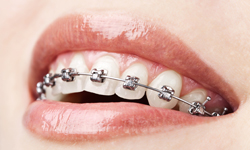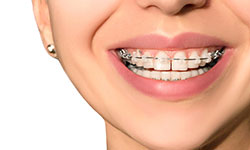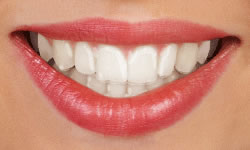Types of Braces
Self-Ligating Braces

Self-ligating braces are made from the same stainless steel materials as older style braces. However, self-ligating braces do not require the use of colored ties to hold the wire in, meaning fewer appointments and less friction being placed on the teeth. Self-ligating braces come in traditional metal or clear brackets. They are the same size as the older braces, but use a specialized clip in place of elastics to help the archwire guide teeth into place. The clip results in reduced pressure being placed on the tooth, and the memory archwire requires fewer adjustments so the teeth move easier and with less pressure and pain.
Damon™ Clear Braces

Ceramic braces are made of clear materials and are therefore less visible on your teeth than metal braces. For this reason, ceramic braces are used mainly on older teenagers and adult patients who have cosmetic concerns. While they are visually less prominent, they do require more attention to oral hygiene as ceramic braces are larger and are more brittle than their metal counterparts. They are typically used on the upper front teeth which are more visible than the lower teeth. Ceramic is more abraisive too so not usually used on the lower teeth for fear of chipping the enamel of the upper teeth.
Clear Aligners

Clear aligners are a series of invisible, removable, and comfortable acrylic trays that straighten your teeth like braces. Not only are the aligners invisible, they are removable, so you can eat and drink what you want while in treatment, plus brushing and flossing are less of a hassle. The aligners are comfortable and have no metal to cause mouth abrasions during treatment. While aligners are great for fixing minor crowding and spacing, they will not fix every problem. Dr. Harrison has extensive experience with aligners and can give you the best case scenario for your treatment outcome. Severely rotated teeth, for example, may be corrected better with limited braces while using aligners on the opposing arch. Dr. Harrison can help you decide.